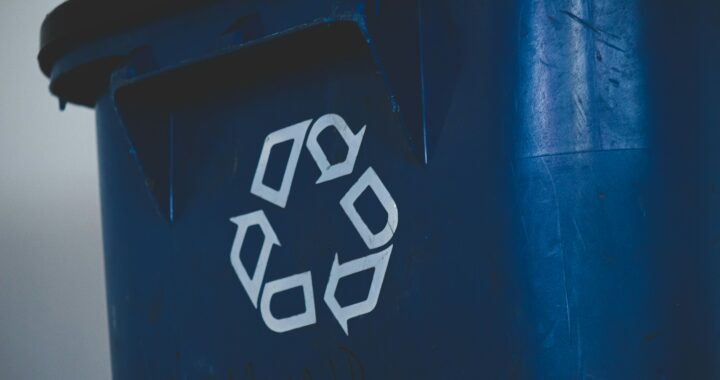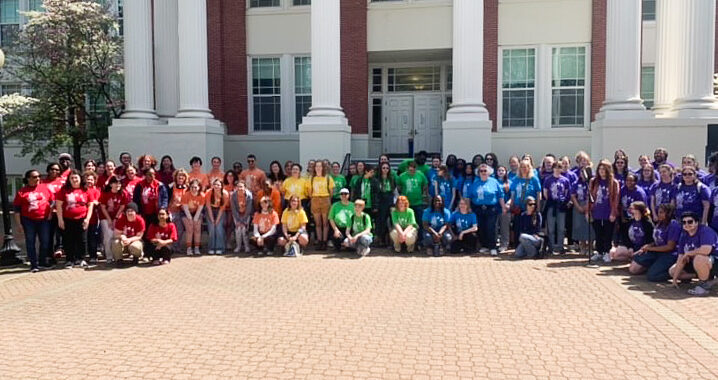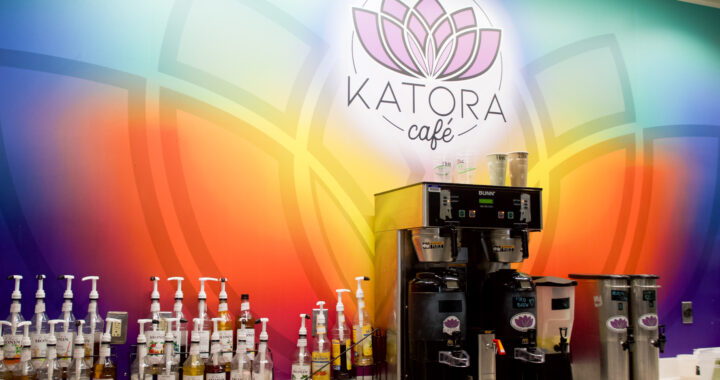Survey shows mixed student awareness of COVID-19 cases on campus
4 min read
The survey of 101 students conducted by The Blue & Gray Press found that 53.5% of respondents had referenced UMW's COVID-19 dashboard, while 45.6% of respondents had never heard of the dashboard or had never looked at it. | Eve Thompson, The Blue & Gray Press
AMANA KASSEM
Staff Writer
Before UMW President Troy Paino announced the return of students to campus with a detailed reopening plan, steps were put in place in case the University had to shut down again. A COVID-19 Task Force was assigned to track the spread of the virus on campus. UMW also created a COVID-19 Dashboard on the UMW website, which listed these statistics for anyone to see. The dashboard is updated Monday through Friday and includes the total number of self-reports, cases, isolation and quarantine spaces, student health center tests, surveillance tests and the results of those tests.
The Blue & Gray Press conducted a survey of 101 UMW students to assess their awareness and use of the COVID-19 dashboard. There was equal representation of students from each class, with approximately 29 percent comprising the class of 2021, followed by the classes of 2022 (27 percent), 2023 (24 percent) and 2024 (21 percent). About 55 percent of respondents identified themselves as living on campus with one or more in-person classes, followed by 20 percent living off campus with no in-person classes, then 15 percent living off campus with one or more in-person classes, 10 percent living on campus with no in-person classes and 1 percent taking a gap semester or year.
According to the survey results, around 46 percent of respondents were either not aware of the dashboard, or have heard about the dashboard but never looked at it, while around 54 percent have looked at it. Approximately 59 percent were aware that there were nine confirmed university cases as of Sept. 17. More than a quarter— 29 percent—of students surveyed had recently gone out to eat at an indoor restaurant or bar.
As of Sept. 29, the dashboard lists 12 cumulative cases and two active cases on campus. Cumulative cases reflect a combination of all confirmed cases reported to the University since Aug. 31, including those that have been self-reported, reported by the Student Health Center and those obtained through surveillance testing. Active cases represent the number of individuals who are currently in isolation after testing positive for COVID-19. Once the period of isolation ends, cases are no longer considered active.
According to the dashboard website, the dashboard, “contains information that contributes to the assessment of the University’s status but cannot be considered a complete representation of the actual number of cases or degree of illness on campus, and is not intended to serve as a decision-making tool.”
Nancy Wang, director of student health, said that students who feel ill can self-report their symptoms by filling out a self-report form, found on the COVID-19 Dashboard page, or by emailing Dave Fleming, COVID-19 monitoring and trace coordinator.
The decision to shut down the University again depends largely on the number of available isolation and quarantine spaces, which can be viewed on the dashboard page. “Fortunately, our delay to bring students back to campus allowed us to increase our capacity in this regard. Thus far we are doing quite well with ample space available,” said Paino.
He also said that Dr. Fauci and other public health experts have recently cautioned against sending students home if there is a spike of cases on campus.
“They are concerned with spreading the virus to the communities where students would be returning. It is likely that the first step in the case of a rapid spread of the virus on campus would be to return to one hundred percent remote learning for a couple of weeks and have students quarantine in place (on campus). This is an approach followed by other schools such as the University of Notre Dame and has had positive results,” said Paino.
Although UMW has placed many precautions and reminders around campus to “monitor, mask, distance, and clean”, there are still questions that arise regarding the spread on campus. Anna Billingsley, Associate Vice President for University Relations, said that the school has been “cautiously optimistic that the numbers will stay relatively low; the plan is to continue with students on campus through November 20.” .
The future remains unclear for the class of 2020 and 2021 in regards to commencement. “While we hope that circumstances change to allow for a safe ceremony on Ball Circle, we also recognize the very real possibility that this might not be the case. We have a committee that plans commencement, and I know both the Implementation Team and this committee are closely monitoring the situation and discussing alternatives to the traditional Ball Circle commencement ceremony,” said Paino. “We also still want to appropriately celebrate the Class of 2020. Graduates from both the Class of 2020 and 2021 will be consulted before we make any definite alternate plans.”
The University’s COVID-19 Implementation Team is also discussing plans and preparations for Spring 2021. According to President Paino, changes are being made to the spring semester calendar, which includes starting the semester late. “This allows us to add a three-week remote [January term] so that students can take an online course before the spring semester starts,” said Paino.


















